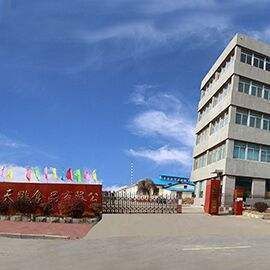Dalian Tianpeng Food Co., Ltd., established in August 1994, is located in Fuzhou Town Industrial Park, Wafangdian City. With fixed assets of over RMB 50 million, our company covers an area of nearly 100,000m2 with a construction area of approximately 50,000m2. By virtue of unique natural resources, our company specializes in the processing of 30 kinds of products with main raw materials of horseradish, kanpyo, kanpyo fruits, vegetables, and edible fungi. Our products are sold to Japan, South Korea and other Asian countries, the United States, and Germany and other European countries. We own a foreign exchange close to 10 million US dollars every year. Our company holds the invariable management philosophy of "taking the customer requirements as the foothold in all business activities, and truly satisfying customers by goods and services". As early as in 1997, our company passed the evaluation of ISO9001:2000 quality management system and HACCP food safety system, winning praises of old and new customers at home and abroad with safety products of stable quality, high-quality service, and good reputation. Tianpeng reaches the peak in ten years as if we had experienced a century.In 2004, on the occasion of the 10th anniversary of our company, we invested to build Dalian Tianke Bioengineering Co., Ltd., which specializes in the development of environmentally-friendly products and supercritical extracted products to satisfy more consumers. In August 2006, under the support and advice of the majority of our customers, our company invested to establish Dalian Tianzhou Wine Co., Ltd., which has bought Japanese-made satake rice polishers, marusan low-temperature sterilization machines, and other advanced equipment to produce the increasingly popular customer favorites like Japanese sake, mirin, and vinegar made of top-quality rice and glutinous rice.Wasabi is sometimes called Japanese horseradish, and its taste is very similar. However, real wasabi - wasabia japonica - is a relative of the family and an elusive little root. Like horseradish, it is a root, or , and it is grated or sliced for use in cooking. Wasabi is difficult to find because it is difficult to grow. It is expensive to buy because it is expensive to grow.Wasabi is a fussy little plant, and has to be nurtured and brought carefully along like a delicate child. It takes about 18 months to reach its mature height of about 6 inches (36cm). Wasabi requires a constant stream of cool water, but not too cool; shade, but not too much shade; and a mild climate. Thus, the United States is not ideal wasabi-growing country, except in the Pacific-Northwest, where growers have had some success with the plant. It is also grown successfully in New Zealand, as well as in Japan.may seize anyone who buys a genuine wasabi root. A single root may cost US$8-$10, and wasabi roots run about US$70-$100 per pound, depending on where the root was grown. Some Asian markets in larger cities may have fresh, genuine wasabi roots for sale, and a shopper will know he has the genuine article by the price .When the wasabi is finally secured, it is prepared for eating raw by washing it, trimming any bumpy or scaly parts off with a sharp knife, and then grating it in a circular motion. A fine metal grater, such as a lemon zester, may be used, but real wasabi gourmands insist on a sharkskin grater, which they say produces a velvety grind. The grated wasabi is gathered into a ball and left to sit for a couple of minutes, to allow the heat and flavor to develop, then it is eaten. The traditional use is to eat it with sushi or sashimi, but it also may be used to flavor mustard or , as a meat sauce, or in salad dressings. For those who simply cannot afford the genuine root, most cooks say the wasabi powder available in supermarkets will work nearly as well as the wasabia japonica. The horseradish root is a close relative to and contains an eye-watering that produce
